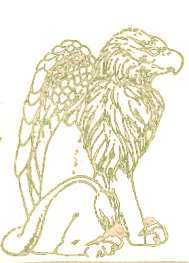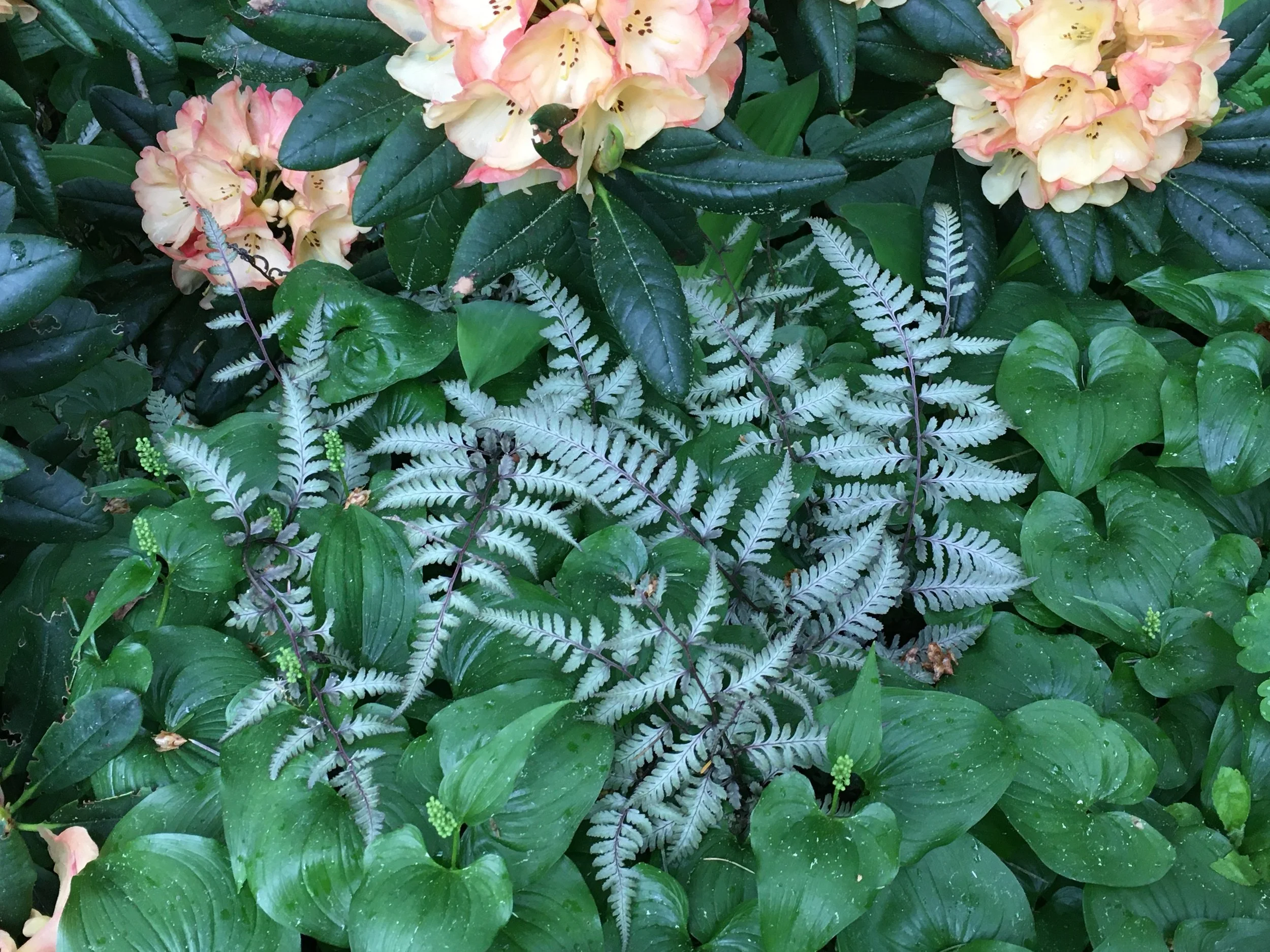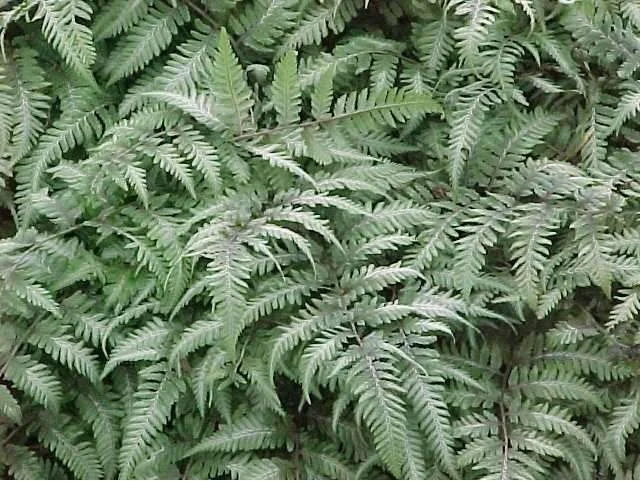Search for ferns by common name, latin name, USDA Zone, or by keywords like whether the fern is Evergreen, Sub-Evergreen, Semi-Evergreen, Deciduous, or Wintergreen or just browse our current fern selections.
Japanese Painted Fern (Anisocampium [formerly Athyrium] niponicum 'Pictum')
Japanese Painted Fern (Anisocampium [formerly Athyrium] niponicum 'Pictum')
Synonyms/Also sold as: formerly Athyrium niponicum ‘Pictum’, a recent taxonomic revision has placed this fern into the genus Anisocampium.
It's easy to see why Japanese Painted Ferns are a favorite for many gardeners. Tri-color pastels, as if from an artist's palette, adorn the tri-pinnatifid (three-times-divided) fronds of this fern. Glowing burgundy stems meld into the soft green pinnae, finishing in a spray of creamy to chalky white at the edges and tips. The long, pointed, triangular shaped 1 to 1 1/2' fronds tend to arch down in a pleasing cascade, making it an excellent and highly visible foreground companion for other shade and moisture-loving perennials in the garden. Because they have a colonizing rhizome, clumps of Japanese Painted Ferns will spread in favorable conditions, and put fronds up from multiple locations rather than a central crown (caudex), making for a profuse, almost hedge-like display that is perfect for shady borders and low accents.
This cultivar exhibits a tremendous range of color and texture variation when grown from spore, and some plants will tend to be heavy on the burgundy accents, while others tend more toward chalky white tones. When selecting Japanese Painted Ferns, try to pick one whose texture and coloration is pleasing to you, since they vary somewhat! This is all natural variation within the species cultivar. While specimens tending toward burgundy are impressive as stand-alones, or against contrasting colors of other perennials, specimens with good white coloration often show up much better in the shady, moist locations that where these ferns thrive. Good coloration is best achieved with early morning or late afternoon dappled sun, while taking care to maintain a humus-rich moist root run. Japanese painted ferns do not like to be dry even when they are dormant in the winter! Snails and slugs are particularly fond of emerging new growth so for best results protect with mollusk trap or baits in the spring.
Frond Condition: Deciduous; colonizing
Mature Height: 12-15"
Origin: Japan
Cultural Requirements: Partly Shaded, Full Shade, Evenly Moist, protect from slugs and snails
USDA Zones: 4,5,6,7,8
Judith's notes on other names and forms:
This has been mis-identified as iseanum or goeringianum in the past and misspelled as "nipponicum" in the trade. Commercial growers have been selecting and naming various color forms, but some of these forms are not particularly remarkable. Rather, they fit right into the natural range of color variation this cultivar demonstrates when large populations are grown from spore. I have difficulty picking out the selections known as 'Ursula's Red', 'Silver Falls, 'Pewter Lace', and 'Burgundy Lace' from normal variation in spore-grown populations! 'Wildwood Twist', is supposedly a hybrid between niponicum 'Pictum' and Athyrium otophorum, yet it shows no hybrid parentage with otophorum. A hybrid between these two would be sterile and would have some characteristics of both parents, yet when spores are sown it behaves just like any other sowing of niponcium 'Pictum' producing a range of nicely colored forms and some reversion to niponicum!
Some strains, such as the Ghost Upright Hybrid Painted Fern (Athyrium 'Ghost' (niponicum 'Pictum' x filix-femina), Branford Rambler (Athyrium niponicum 'Branford rambler'), and the Crested Japanese Lady Fern
(Athyrium niponicum 'Applecourt'), demonstrate distinctive and identifiable differences from normal variations in the 'Pictum' cultivar when sown from spore.










